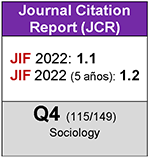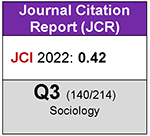Networking among Scientific Journal Editors: a network analysis among the Top 100 Sociology Journals
DOI:
https://doi.org/10.5477/cis/reis.175.27Keywords:
Network Analysis, Editorial Board, Scientific Elite, Interlocking Editorship, Scientific JournalsAbstract
One means of examining the structure of a scientific discipline consists of analyzing the editorial boards of its most influential journals. This work analyzes the networks among the top 100 sociology journals, formed by multiple memberships of editors to distinct boards (interlocking editorship). The results suggest that a small number of editors having similar profiles simultaneously serve on a variety of journal boards; top journals form a large and united community, with Anglo-Saxon universities dominating the same;
universities from countries located in the Southern Hemisphere hold a marginal position; and general sociology journals are more connected than specialized sociology journals. These findings contribute to debates on disciplinary segmentation, degrees of internationalization, openness to non-academic sectors and trajectories of the scientific “elite”.
Downloads
Downloads
Published
How to Cite
Issue
Section
License
Copyright (c) 2024 Revista Española de Investigaciones Sociológicas

This work is licensed under a Creative Commons Attribution-ShareAlike 4.0 International License.
Permite Compartir — copiar y redistribuir el material en cualquier medio o formato, Adaptar — remezclar, transformar y construir a partir del material para cualquier propósito, incluso comercialmente.








